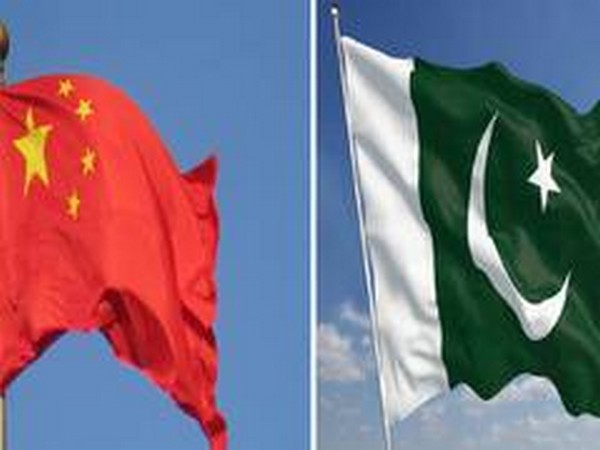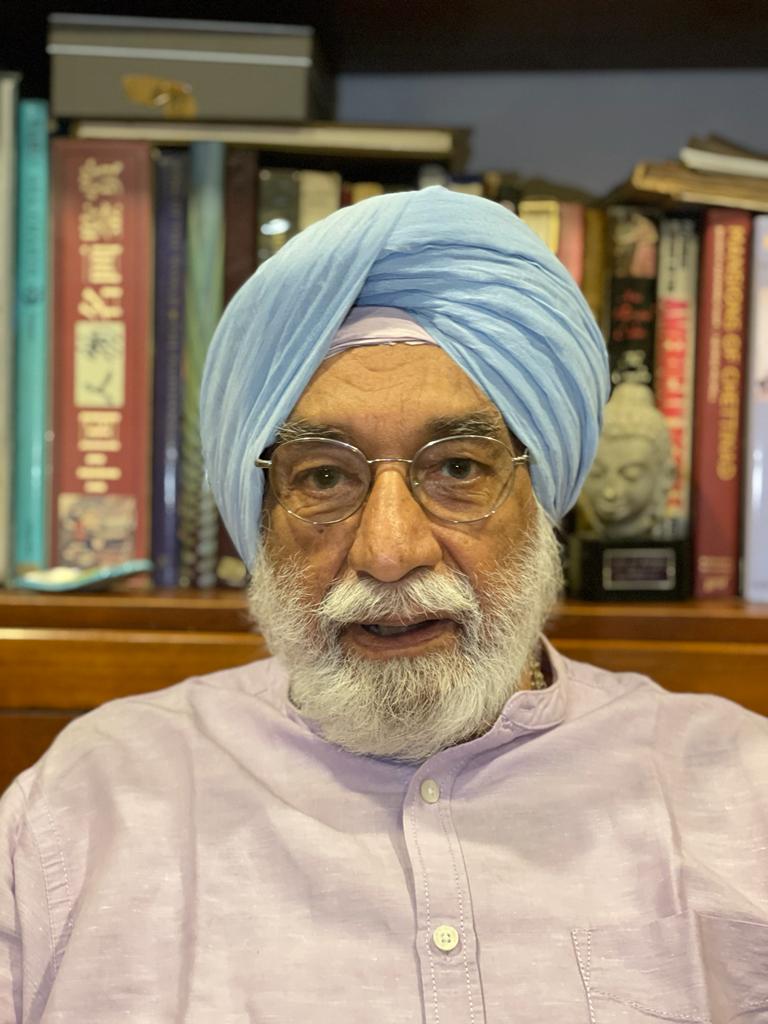
India’s Strategy for a Two Front Threat

Developments around the invasion of Ukraine by Russia has thrown up certain factors that are pertinent to India’s security and the need to find more secure alternatives to our present overwhelming dependence on Russia to sustain all three military domains viz., Army, Air Force and Navy. The reality facing India is that it has two nations possessing varied degree of capacities and capabilities breathing down our necks, in China and Pakistan, as our neighbouring countries who both singly and jointly threaten India’s security. This threat has been multiplied by the present “all weather friendship” directed largely towards enhancing the threat to India between these two countries.
To this is the added factor that the Russia of today, with its checkered relationship with the Trans-Atlantic nations, has a growing dependence on China. India is thus faced with a strategic dilemma that it must find urgent solutions, to the very least contain the fall out in the immediate sense, as it must also for the long term.
Here it is important to understand that the close defence and political understandings that had evolved between democratic India and the authoritarian communist state of the erstwhile Soviet Union was because of the Cold War and the close defence and security relationship between Washington and Islamabad. Pakistan, from its very creation had established a security threat to India that surfaced in all its dimensions with the events that commenced immediately before the merger of the state of Jammu and Kashmir (J&K) with India and have remained a constant factor defining the relations between our two countries.
At the time of Independence and for a period thereafter India had largely depended on military supplies from the United Kingdom. However, as the threat from Pakistan continued to mount with the American relationship with Islamabad adding further complications towards the threat to India, New Delhi turned to Moscow to fill the equipment and technology gaps, to enhance its defence capabilities. Adding urgency to this matter was the expanding threat from China that had occupied Tibet in 1950 and taken steps during the fulfillment of its imperialistic designs to transgress and occupy large tracts of Indian territory in the Aksai Chin sector of the border of India’s Ladakh with Tibet and Xinjiang.
After China came to occupy Tibet, Lt Gen Thorat, Army Commander Eastern Command had conducted an important exercise, titled ‘Lal Kila’ that had not only outlined the fact that he expected China to attack India, once it had consolidated its hold on Tibet. Concentrating on his response to the attack China would carry out in the NEFA (Today’s Indian state of Arunachal) region, he had also outlined the equipment deficiencies that would need urgent attention. His strategy was thrown into the wastepaper basket by the then Defence Minister, aided and abetted by the favoured armchair General, B M Kaul and an ill-worked forward policy. The losses sustained by India in both military and political spheres, through its defeat in 1962 was the result of ignoring sage and well worked out strategies.
Post 1962 and 1965, India strengthened its defence responsiveness, and the utilization of Russian military equipment became an imperative. This is true even in the current situation, despite the twin objectives of diversification of defence equipment and technology imports, and the more subjective moves towards indigenization by strengthening the manufacturing base by including the private sector and reforming the Defence Purchase Policy. To this must be added the attempts to liberalise the involvement of external manufacturers through Joint Ventures established with Indian partners.
The main issue that confronts India today is that it is facing an increasingly hostile and aggressive China on its borders with Tibet. China is expanding its moves and encroaching on Indian territory by making moves across the LAC. In this process it has aggressed in the Ladakh sector where an eyeball-to-eyeball confrontation is still taking place between Chinese and Indian armed forces. This is a China that sees itself as a player in the Indian States of J&K and Ladakh and this threat is not going anywhere.
In fact, it has been clarified that all agreements and understandings between India and China on the safeguarding of peace and security along the LAC have been openly violated and to all practical purposes totally disregarded by Beijing. This is a China that has had a long-term relationship with Russia, not only importing equipment from it but also important technologies which it has further researched upon, along with technologies that it has stolen from the west by blatantly violating IPR commitments, developing highly sophisticated new generation equipment. Further as Russia’s economic and strategic relationship progresses with China, India can no longer rule out the possibility of Russia becoming an unreliable partner both in terms of promised technology transfers, timely supply of vital spares, particularly if another war like situation is imposed on India by either China or Pakistan or by both, and the upgradation of existing platforms, all of which both singly and jointly could have a major negative impact on India’s defence capabilities.
Here another factor has surfaced. In the war visited upon Ukraine, Russian heavy armour, particularly tanks and logistics equipment has been largely neutralized by the technology placed at the disposal of the armed forces of the Ukraine by the NATO countries led by the United States and the UK. This carries lessons for India. While it could be argued that the Russian armed forces have suffered at the hands of poor military strategies and lack of training, it is difficult to rule out that perhaps the technology placed at the disposal of the Ukrainians has outdone the Russian technology except in the area of missiles.
Indian military and strategic experts, one would imagine, are closely following what is happening in Ukraine and deriving lessons from the way Russian technology is equipped to counter, or unable to counter, the western technology being used against it. For instance, it would be very important for the Indian Navy to work out the tactical use of technology by the Ukraine coupled to the information being provided to it by Washington to destroy the Russian flagship destroyer, the Moskva, in the Sea of Azov. Indian Navy that remains heavily equipped by Russian technology, could face the same vulnerabilities as the Russian’s did. After all both China and Pakistan would also be observing what’s happening in Ukraine and could employ similar tactics to put the Indian Navy under pressure.
What is apparent in all of this is that India has to be fully prepared to face the two-fold threat that is posed to it by the Sino-Pak combine. Here it becomes crucial that India does not follow the policy of reactive responses, but think through the strategic and security compulsions in their entirety and evolve long-term along with immediate solutions that would enable to keep new generations of equipment at its disposal. Tactically speaking, the declarations that have been made of enhanced cooperation between India, the United States, the Japanese and the Australians is a welcome development. They must be followed through without hesitation and should be tied into the overall industrial policy frameworks that follows the principals of incentivizing the transfer, the utilization, the further development and the establishment of a very strong R&D base. To these arrangements there should be clearly established lines of engagement backed by transfer of technologies with France, Germany and Israel. The UK shall always follow the lead taken in such matters by Washington so they should be involved keeping that factor in mind.
Tactically the doors to Russia should be kept open and they should continue to be encouraged to look upon India as a key partner, where it remains a useful entity in the relations between Moscow and Beijing. It is not in India’s strategic interests to have Russia completely in the Chinese camp.
Finally, India has to play the nuclear weapon card with finesse, building up on the deterrence characteristics that can help contain the aggressive intent on display by China and to a conjoint manner by Pakistan. This would mean that not just the number of weapons and delivery systems need to be concentrated upon, but the need is for tactical weapons and qualitative technological improvements that would enhance the deterrence in case of any indication of aggression.
Ultimately China, because of its historical past, only understands the value of power in a relationship. India has to ensure that within a given period of time, its comprehensive national power is improved drastically, and thereby the power parity between the two nations provides the raison d’etre that binds their futures together.
**********
Disclaimer
The opinions expressed in this article are the author’s own and do not reflect the views of Chanakya Forum. All information provided in this article including timeliness, completeness, accuracy, suitability or validity of information referenced therein, is the sole responsibility of the author. www.chanakyaforum.com does not assume any responsibility for the same.
Chanakya Forum is now on . Click here to join our channel (@ChanakyaForum) and stay updated with the latest headlines and articles.
Important
We work round the clock to bring you the finest articles and updates from around the world. There is a team that works tirelessly to ensure that you have a seamless reading experience. But all this costs money. Please support us so that we keep doing what we do best. Happy Reading
Support Us





















POST COMMENTS (1)
Kalidan Singh